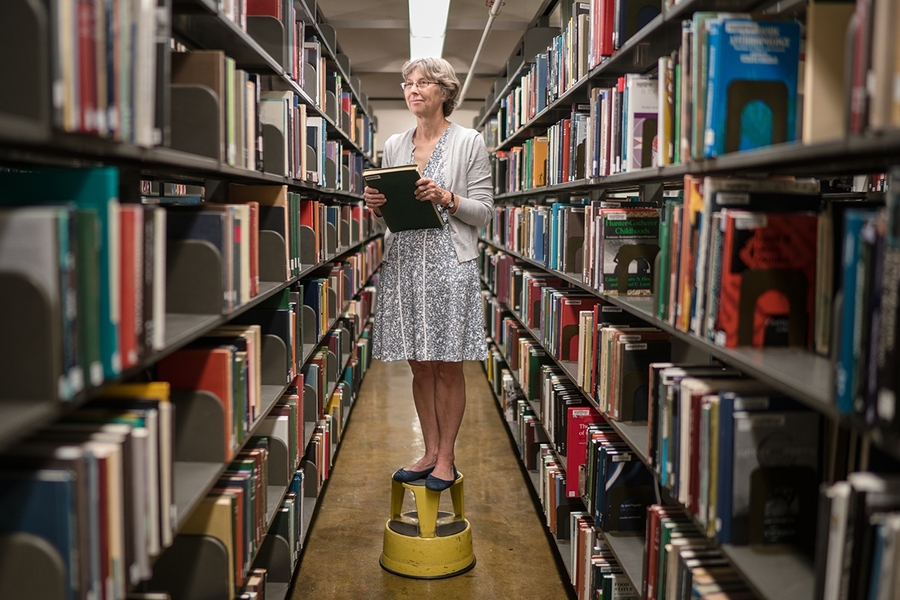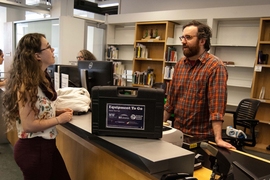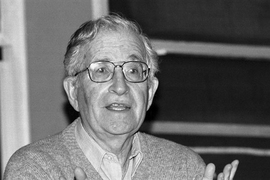The MIT Libraries are here to make life and learning at the Institute a little easier. They provide students with needed resources, subject-area experts who are happy to help, and friendly spaces where enjoying the quiet doesn’t have to mean being alone.
MIT’s five library locations — Barker, Dewey, Hayden, Lewis Music, and Rotch — are interspersed throughout the campus. Students are welcome in all locations, including the Institute Archives and Special Collections, which are home to rare and uniquely MIT items ranging from Doc Edgerton’s notebooks to William Barton Rogers’ letter about founding a new institute of technology.
“We like to think of ourselves as the guides to the whole landscape that people have here,” says Chris Sherratt, the librarian for atmospheric and oceanic sciences, energy and environment, and nuclear science and engineering. “When they [students] come to MIT, they have riches beyond their imagination in all the different subjects that we cover.”
Sherratt is one of 25 subject experts available to support students, faculty, and researchers in advancing their work on every topic from aeronautics to urban studies. Getting to know library staff is a smart move for anyone navigating MIT for the first time. Not only do the staff help students track down the resources they need in their area of study, they offer expert help in organizing and sharing research data and advice on fair use, open access, and other scholarly publishing issues. They can also give guidance on using geographic information systems (GIS), and more.
“Library staff help but we don’t evaluate students,” says MIT Director of Libraries Chris Bourg. “This makes the libraries places where students can be especially free and comfortable asking questions, seeking help, and experimenting with new ideas.”
This being MIT, the libraries aren’t just places for studying; they’re also places for making. Students can borrow Equipment-To-Go kits, containing everything from heart rate sensors to soldering stations, and soon will be able to compose, mix, and edit music in a planned audio lab. Library staff also have been collaborating with students and faculty on text and data-mining projects, collecting geographic data with drones, and creating an augmented reality experience in the Lewis Music Library.
Sometimes getting support means taking a break. “Om Under the Dome” helps people stay grounded with 30-minute silent meditations every Monday at noon in the Barker Library Reading Room. “Furry First Fridays” are monthly study breaks where students can de-stress with therapy dogs. “MIT Reads” is an Institute-wide reading and discussion program open to anyone in the community. (Anyone interested can join this fall for a closer collective read of Americanah by Chimamanda Ngozi Adichie.) Novels, graphic novels, DVDs, and streaming music and video are also always on hand for those needing to recharge.
Students ready to get started can find all the information they need at libraries.mit.edu/welcome.









